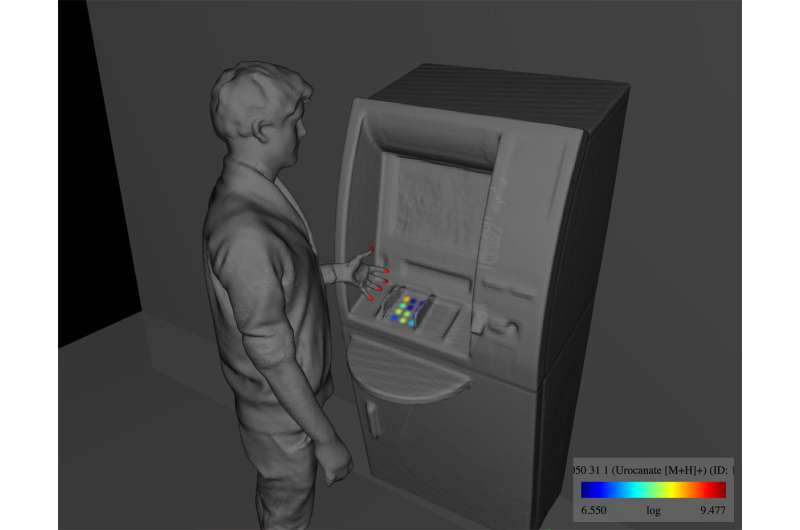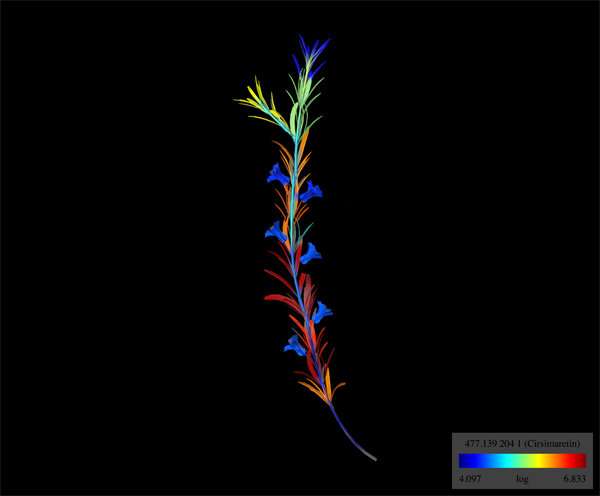Molecular mapping made easy

Every day, every inch of skin on your body comes into contact with thousands of molecules—from food, cosmetics, sweat, the microbes that call your skin home. Now researchers can create interactive 3D maps that show where each molecule lingers on your body, thanks to a new method developed by University of California San Diego and European Molecular Biology Laboratory (EMBL) researchers. The technique is published December 21 in Nature Protocols.
The goal of this 3D mapping is to better understand how molecules from our surroundings, as well those produced by our bodies and the microbial communities on our skin, influence one another and our health. When the team previously used this approach to map the molecules on the skin of two volunteers, they found prevalent traces of sunscreen and other hygiene products, even three days after they'd last been used.
The 3D molecular mapping method is the brainchild of Pieter Dorrestein, PhD, professor in UC San Diego School of Medicine and Skaggs School of Pharmacy and Pharmaceutical Sciences, Theodore Alexandrov, PhD, team leader at EMBL in Germany, and their teams. They determined how best to collect the samples, determine their chemical composition using mass spectrometry, and build the mapping software used for analysis.
After they were approached by many colleagues from fields as diverse as forensics, cosmetics, ecology and agriculture, the researchers converted the 3D molecular mapping method into a step-by-step recipe with intuitive software and made it available to the global scientific community.

More information: Nature Protocols (2017). DOI: 10.1038/nprot.2017.122
Journal information: Nature Protocols
Provided by University of California - San Diego


















